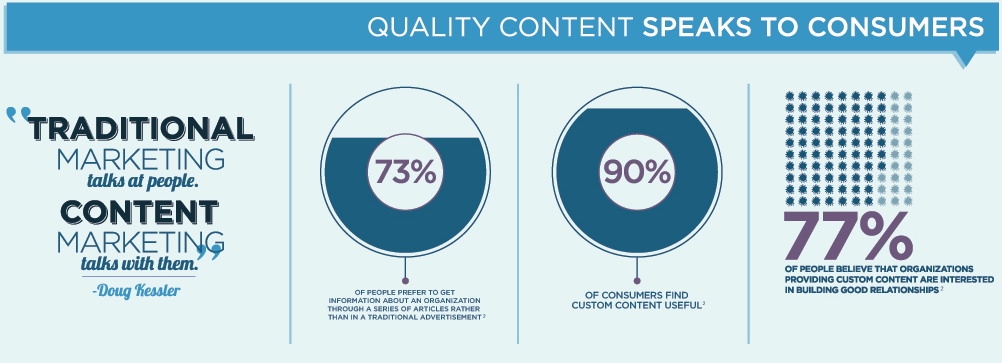Is a Google Content Quality Score Important?
What Signals Does Google Use to Calculate Your Content Quality Score?
Every once in a blue moon, Google makes major changes in its algorithm. The Mountainview behemoth has used silence and cloaking very to keep SEO pros off balance.
Hidden in the shadows of its new RankBrain algo update, could be a new approach to calculating web content quality. Why? That we don’t know. It may be just a vain, academic play, or it could signal they’ve found a new, rich vein of digital gold.
Or is it because inbound links, citations, traffic and other signals aren’t working anymore.
“Thar’s Gold up in them thar Mountainview mountains”
What if Google would like to turn on big corporations and squeeze money out of them, and in turn give SERPs visibility back to smaller organizations (who can produce high quality content)? It may be far-fetched, but one thing for sure, change in SERPs means opportunity for some.
Very Frequent Updates
I’ve covered two very important Google updates, the Fresh update and the Speed update. Deliver hot, fresh content fast to searchers and Google will like it.
Earlier…, some publishers began noticing changes to Google’s search results. We had asked Google if this due to a Panda Update or any other type of update, but Google replied no. Since then, more reports came in, with the change even being dubbed the “Phantom Update” because something did seem to have happened, even if Google wasn’t acknowledging it. — courtesy of Search Engine Land regarding a quality update in 2015.
Google’s been looking for alternative ways of ranking web pages for many years now. It makes sense that they would test out changes. Still highly dependent on volume of inbound links and link anchor text for its search ranking results pages, Google is easy prey for big corporate SEOs. In fact, many corporate marketers have become quite bold using ppc and remarketing to bolster their organic rankings. They’re gaming authority and trust way too much now, simply by using their overabundance of cash. That’s embarrassing for Google if people start talking about it.
With a new demotion of pagerank and authority, and the rise of content quality and engagement metrics, corporate SEOs can’t rely on their big ranking power. And corporations generally aren’t nimble, responsive, genuine, flexible, and tuned into Google’s demands. That spells trouble for big corporate publishers with big budgets.
Perhaps Google’s realizing it’s been too lenient on rich corporations and now is a good time to squeeze them?
How Do they Determine Content Quality?
For Google, content quality was always determined by off-site signals such as link volume, authority, and trustrank. Those can be and are gamed by SEOs. With the new content quality update, Google can detect real, true engagement of content based on behavior and click outcomes. In other words, Google may feel it can assess engagement quality. Will the purchase button and thank you page be the ultimate quality cue?
Indexing algorithm updates such as Big Daddy, Penguin, Panda and Hummingbird have helped them pick out and rank better pages and sites and demote poor quality pages and sites including spammy ones. The strategy was to diversify and contrast ranking signals so SEOs would face more difficulty. The goal was to make companies give up on SEO on instead pay for Adwords Ads although SMBs appear to have turned more to Facebook ads than Adwords.
Still, the squeeze worked incredibly well for Google’s corporate profits. Small businesses however got hit hard as they couldn’t play Google’s new indexing game.
So for some years now, big business has enjoyed a bounty of traffic and ease of rankings. Volume and big money has definitely won out. But if content quality becomes a bigger factor, small businesses who are able to create high quality, epic content may once again capture a share of free organic search traffic and avoid pricey paid channels.
Today, big publisher websites dominate Google’s rankings. It leaves smaller websites with little visibility even though they may have just as much real value to share as larger publishers. It’s not fair, and the content produced is predictable, shallow, and skewed for big corporate values.
If Google does increase its preference for particular, high quality, engaging content further, we’ll have to plan, strategize and implement our SEO campaigns expertly.
Enter RankBrain
If your content doesn’t impact, inform, engage and convert, Google can see this. It can also make some judgements as to why it’s not converting. Google could make more judgements about your content relevance, visitor’s clickpaths, time on site, user emotional engagement, and not tell you why it won’t rank.
It’s almost a certainty that Google is watching the complete journey of a customer to evaluate touchpoints, engagement and fulfillment of their quest. The conversion funnel is the focus.
RankBrain is the software component that regulates the overall search results and because it’s considered artificial intelligence, it learns and then predicts what is quality content. If you and I can understand how it makes those decisions and what it typically values, we will get a boost in current and future rankings.
So before we embark on our new content strategy which emphasizes content quality signal optimization, let’s review some important issues.
If Google can’t rely on specific ranking factors and instead must read between the lines of all of them to get a true overall picture of the best sites, we’ll have to look at big picture optimization.
On the Google site, Google does mention poor quality signals such as broken links, spelling errors, and excessive advertising. They recommend original, helpful content. That might point to better engagement and strong user intent and these behaviors they like to try to measure.
Investigate advanced tools and Advanced Search Engine Optimization techniques.

